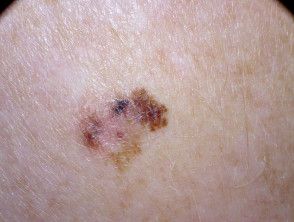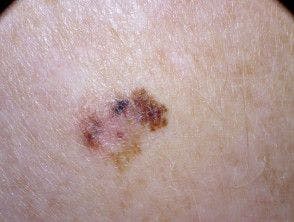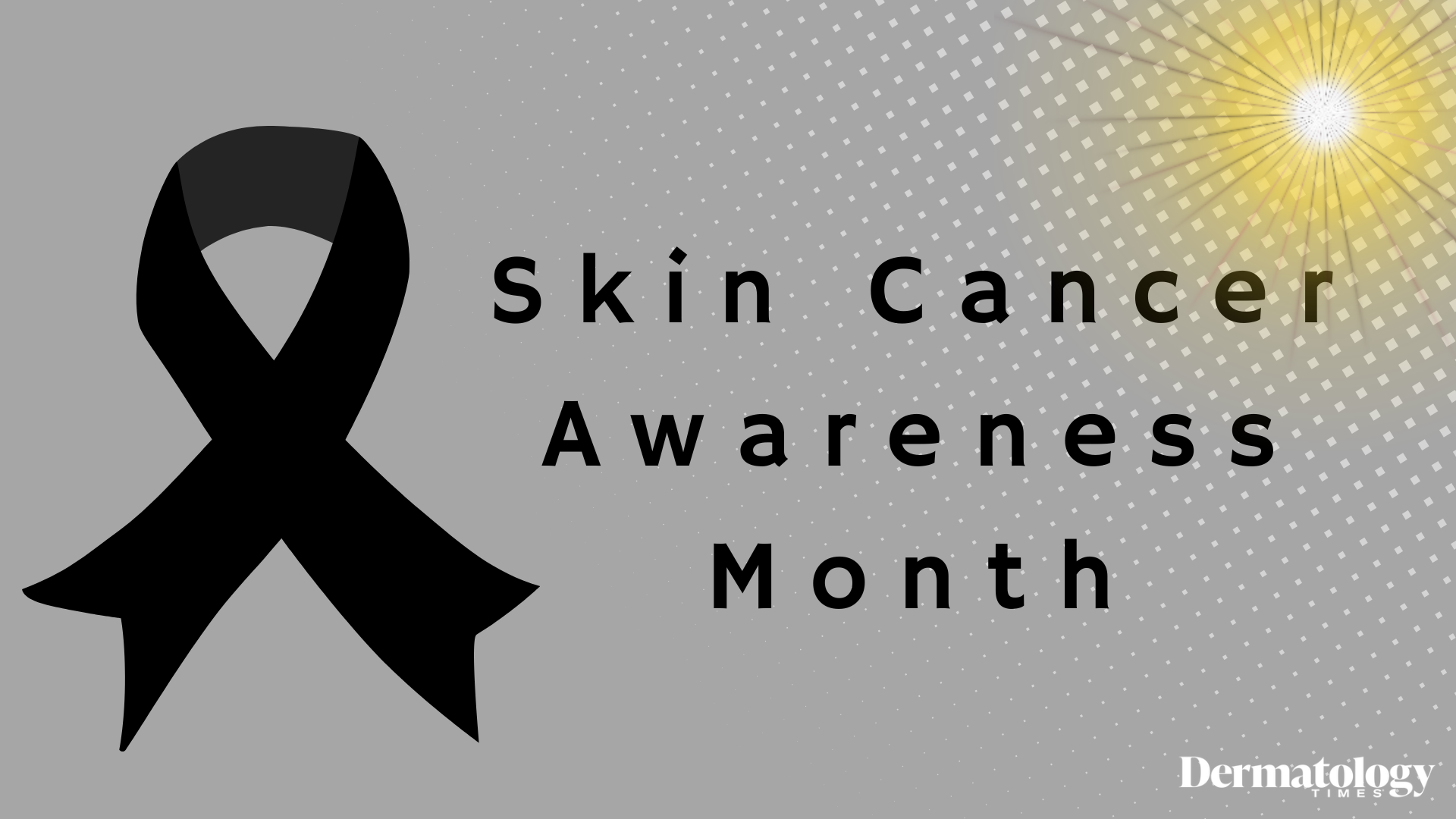- Acne
- Actinic Keratosis
- Aesthetics
- Alopecia
- Atopic Dermatitis
- Buy-and-Bill
- COVID-19
- Case-Based Roundtable
- Chronic Hand Eczema
- Chronic Spontaneous Urticaria
- Drug Watch
- Eczema
- General Dermatology
- Hidradenitis Suppurativa
- Melasma
- NP and PA
- Pediatric Dermatology
- Pigmentary Disorders
- Practice Management
- Precision Medicine and Biologics
- Prurigo Nodularis
- Psoriasis
- Psoriatic Arthritis
- Rare Disease
- Rosacea
- Skin Cancer
- Vitiligo
- Wound Care
News
Article
Dermatology Times
An Increase in Skin Cancer Calls for an Increase in Treatment Options
Author(s):
To address the increased rates of skin cancer while keeping unique patient needs top of mind, there is a pressing need to increase options for treatment.
As many as 1 in 5 Americans will develop skin cancer in their lifetime,1 and the rates of skin cancer continue to rise.2 Treatment is not a one-size-fits-all approach. Factors such as a patient’s age and the location of cancer, among other concerns, can influence the selected path forward. To address the increased rates of skin cancer while keeping unique patient needs top of mind, there is a pressing need to increase options for treatment.
Skin Cancer on the Rise
There are several causes for the increased cases of skin cancer.2 The growing numbers are a direct result of cases being caught sooner due to better detection methods.3 While visual self-exam or clinical examination and biopsy remain standard, other non-invasive tools have recently become available which may aid providers in deciding whether or not to remove a mole or skin abnormality. Such advances include a tape-like material that is placed on a mole and removed to capture traces of genetic material for analysis and total-body photography, which captures high-quality images of every mole on a person’s body in a quick scan. New advances in artificial intelligence are being integrated to better identify potential cancers.
Another factor is that patients are being more proactive in their skin care, following screening recommendations that have led to earlier detection. There is also a growing body of research on skin conditions that were once overlooked that now call for closer monitoring.
For example, one lesser-known skin condition that providers are keeping a closer eye on is hidradenitis suppurativa (HS), as research has consistently found a link between HS and nonmelanoma skin cancers,4 eg, squamous cell carcinoma. The condition is reported to affect approximately 4% of the global population.5
Other reasons for the uptick in cases include more individuals getting exposed to the sun without proper precautions; concerning trends in social media, eg, beer tanning6; and the statistics showing that Americans are living longer lives, which increases the chances of skin cancer or reoccurrence of skin cancer.
Room for Growth
There are several ways to treat skin cancer.3 The most common is surgery to remove the cancerous tissue as well as healthy tissue around it to prevent reoccurrence. However, there are cases where surgery is not an option or the most preferable. For instance, skin cancer is most commonly found on the face due to constant sun exposure; surgery in specific regions of the face could lead to disfigurement or in severe cases the removal of entire facial regions. As individuals age, their skin also stiffens and loses elasticity, making surgery more difficult.
Another common treatment for skin cancer is chemotherapy.7 Although this form of treatment has proven to be a powerful path to fight the disease, the physical toll and impact on the quality of life for the patient create a cause for concern.8 With a well-documented list of adverse effects, it may not be the best option for specific patients, such as those 65 and older9; yet, the average age for a skin cancer diagnosis is 66.10
Radiation therapy is also a known treatment option. This therapy leverages types of radiation to eliminate cancer cells or stall their growth. It is performed through external radiation machines that send radiation into the body toward the area with cancer. In many cases, radiation is most often used alongside another treatment or when surgery is not an option,2 and while it plays an important role, it can also produce uncomfortable or even painful adverse effects.11
A New Path Forward
Although the list above is by no means exhaustive, it offers an overview of the benefits and shortcomings of treatments often used today. Though each treatment has its validity, patients need more options, not only in terms of beating the disease but also when considering their quality of life. The primary goal of all treatments is to eradicate cancer, but providers are now in a position to consider the patient’s quality of life when determining a path forward. This includes avoiding many of the commonly associated concerns in the treatment of skin cancer—be it chemotherapy’s physical toll or the significant mark left behind by surgery.
What’s more, research shows that a strong emphasis on improving quality of life can positively impact survival outcomes,12 underscoring the significance of this approach in modern oncology.
Today, there are novel treatments already in clinical trials to answer the call for more options in skin cancer care, including Alpha DaRT,13 the first localized anticancer therapy to utilize the specific therapeutic properties of alpha particles (known to destroy cancer cells). Unlike some of the commonly used treatments today, the Alpha DaRT can be administered through a quick outpatient procedure, with no need for hospitalization. In addition to the minimally invasive approach, the technology offers several potential advantages, including higher cancer kill rates while sparing healthy surrounding tissues, potential immune response stimulation, reduced radiation exposure, and broad applicability across various tumor types.
Recent years have seen a handful of other innovations in skin cancer treatment as well. One immunotherapy treatment uses immune cells called T cells that have been genetically altered in a lab to more effectively locate and kill cancer cells. Another exciting advancement is a skin cancer vaccine under development.
In conclusion, whereas traditional treatments like surgery, chemotherapy, radiation therapy, and others have merit, they can also pose significant challenges and limitations. Providers are now serving in an era where there is an opportunity to provide patients with more options than ever before.
Robert Den, MD, is a radiation oncologist and the chief medical officer at Alpha Tau Medical.
References
- Skin cancer. American Academy of Dermatology Association. April 22, 2022. Accessed May 13, 2024. https://www.aad.org/media/stats-skin-cancer
- Key statistics for basal and squamous cell skin cancers. American Cancer Society. October 31, 2023. Accessed May 13, 2024. https://www.cancer.org/cancer/types/basal-and-squamous-cell-skin-cancer/about/key-statistics.html
- Skin cancer screening (PDQ) - patient version. National Cancer Institute. March 30, 2023. Accessed May 13, 2024. https://www.cancer.gov/types/skin/patient/skin-screening-pdq
- Bunting K. Does hidradenitis suppurativa raise cancer risk? myHSteam. July 20, 2022. Accessed May 13, 2024. https://www.myhsteam.com/resources/does-hidradenitis-suppurativa-raise-cancer-risk
- Dufour DN, Emtestam L, Jemec GB. Hidradenitis suppurativa: a common and burdensome, yet under-recognised, inflammatory skin disease. Postgrad Med J. 2014;90(1062):216-221. doi:10.1136/postgradmedj-2013-131994
- Miller M. Beer tanning TikTok trend should stay in 2023. Healthnews. April 19, 2024. Accessed May 13, 2024. https://healthnews.com/news/tiktok-beer-tanning-trend/
- Chemotherapy. Mayo Clinic. March 13, 2024. Accessed May 13, 2024. https://www.mayoclinic.org/tests-procedures/chemotherapy/about/pac-20385033
- Den R. Do I have to get chemo to treat my cancer? that answer is changing as treatments evolve. USA Today. March 21, 2024. Accessed May 13, 2024. https://www.usatoday.com/story/opinion/2024/03/21/chemo-cancer-treatment-alternatives-patients-quality-life/73039317007/
- How chemotherapy affects people age 65 and older. Cancer.Net. July 2022. Accessed May 13, 2024. https://www.cancer.net/navigating-cancer-care/adults-65/how-chemotherapy-affects-people-age-65-and-older
- Key statistics for melanoma skin cancer. American Cancer Society. January 17, 2024. Accessed May 13, 2024. https://www.cancer.org/cancer/types/melanoma-skin-cancer/about/key-statistics.html
- How to care for your skin during radiation therapy. American Academy of Dermatology Association. Accessed May 13, 2024. https://www.aad.org/public/diseases/skin-cancer/types/common/melanoma/radiation-care
- Movsas B, Moughan J, Sarna L, et al. Quality of life supersedes the classic prognosticators for long-term survival in locally advanced non-small-cell lung cancer: an analysis of RTOG 9801. J Clin Oncol. 2009;27(34):5816-5822. doi:10.1200/JCO.2009.23.7420
- Alpha DaRT technology. Alpha Tau Medical. Accessed May 13, 2024. https://www.alphatau.com/alpha-dart-radiotherapy

Newsletter
Like what you’re reading? Subscribe to Dermatology Times for weekly updates on therapies, innovations, and real-world practice tips.































